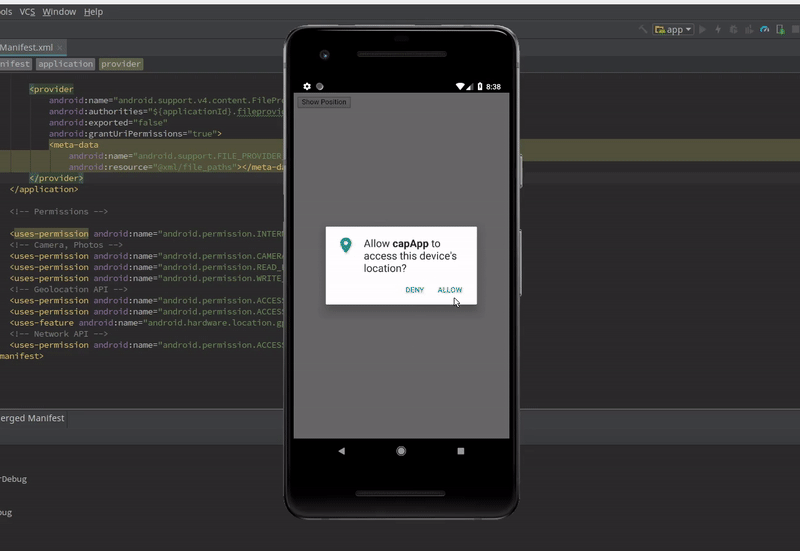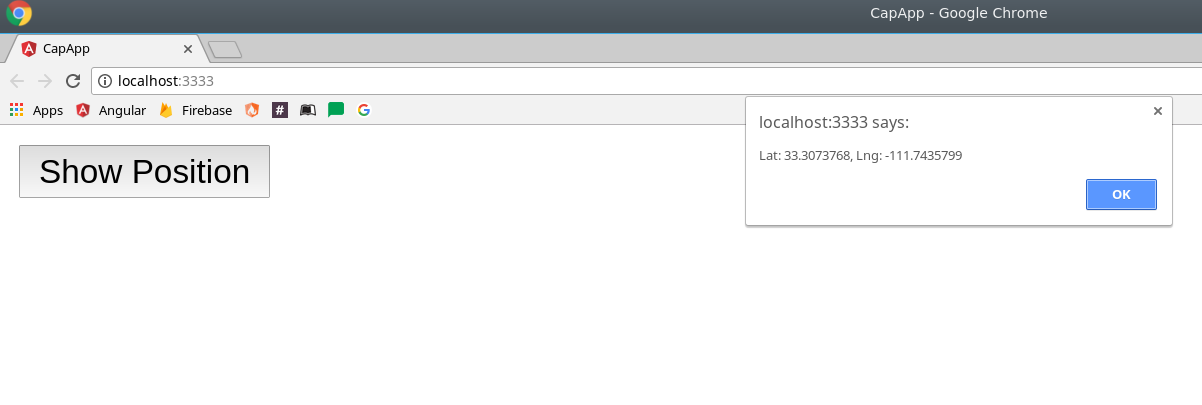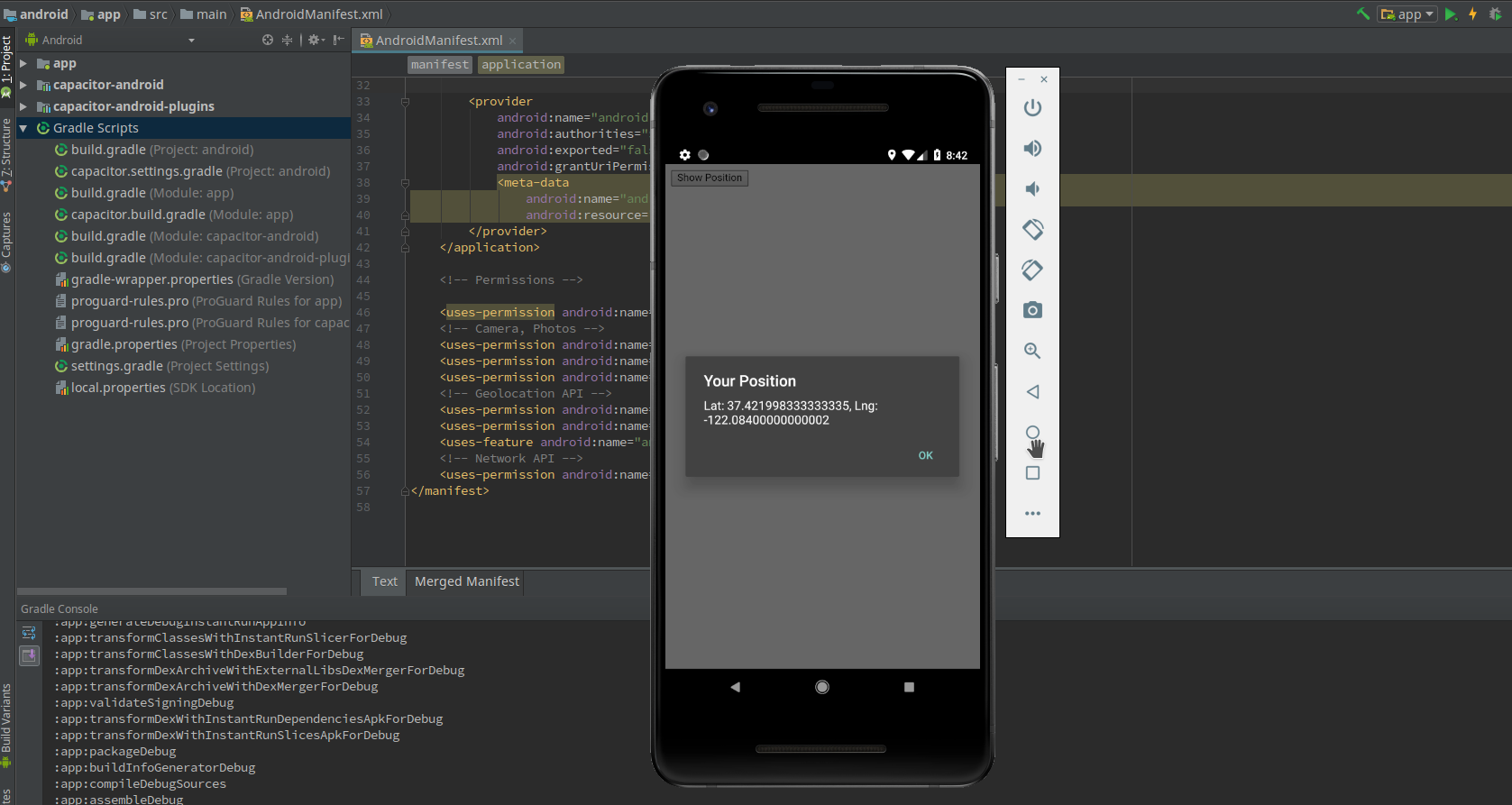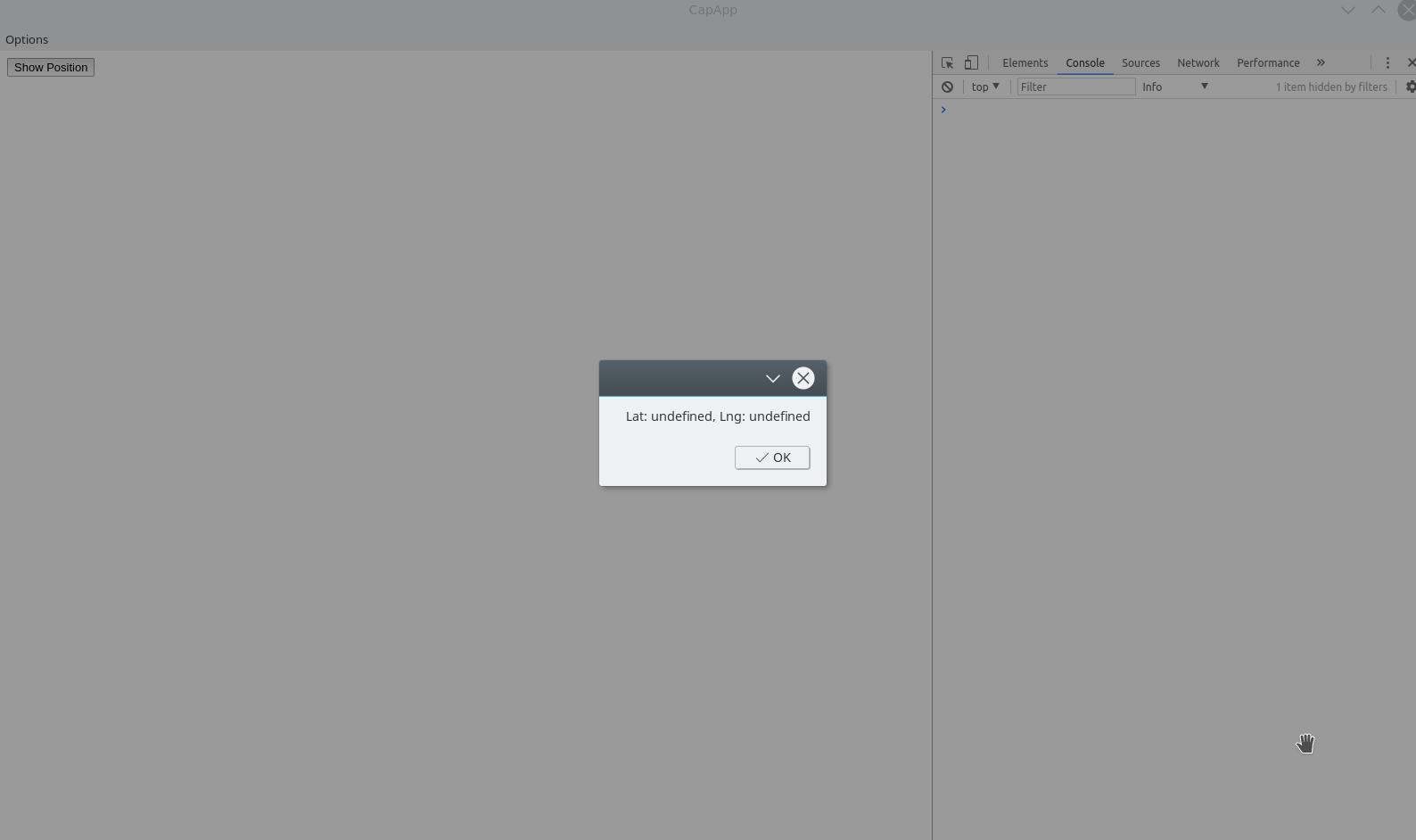You have unlimited access as a PRO member
You are receiving a free preview of 3 lessons
Your free preview as expired - please upgrade to PRO
Contents
Recent Posts

- Object Oriented Programming With TypeScript
- Angular Elements Advanced Techniques
- TypeScript - the Basics
- The Real State of JavaScript 2018
- Cloud Scheduler for Firebase Functions
- Testing Firestore Security Rules With the Emulator
- How to Use Git and Github
- Infinite Virtual Scroll With the Angular CDK
- Build a Group Chat With Firestore
- Async Await Pro Tips
Capacitor - Five Apps in Five Minutes
Episode 96 written by Jeff Delaney
In this lesson, we will take an early look at Capacitor - a replacement for Apache Cordova that enables JavaScript apps to communicate with native app hardare. We will build a simple app that can interact with the geolocation and modal systems on any major software platform.
Using a single Angular codebase, we will create an app that is deployable as:
- Progressive Web App
- iOS - Mobile
- Android - Mobile
- MacOS - Desktop
- Windows - Desktop
At the time of this article Capacitor is an alpha release, so don’t use it in production yet. I will keep this article updated, but the API may change quickly in the future. Always refer to the official docs until this package stabilizes.
Building a native app? Enroll in my full-length Ionic Native + Firebase course.

What is Capacitor?
Capacitor is a library that allows you to build apps with a single HTML,CSS, JS codebase, then deploy to the web, mobile, and desktop platforms. The goal is to eventually replace Apache Cordova with a system that puts Progressive Web Apps on a level playing field. In other words, you build an app that follows web standards, then deploy it to any native platform (without thinking much about the platform differences)
Comparison to Cordova
Ionic currently uses Apache Cordova to interact with native device APIs. If you’ve ever built an Ionic app, you probably wrote a lot of platform-checking code that looks like this:
if (platform.is('cordova')) { |
In Capacitor, this type of code will be simplified to a single line:
capacitorPlugin.doSomething(...) |
I’d much rather write a single method that works on every platform, rather than use conditional statements all over the place.
Building a Geolocation App with Angular
The app we’re building is super simple. The user clicks a button show position and it will alert their lat/lng geographic coordinates. However, every native platform handles geolocation data and alert modals differently, so we use use a capacitor plugin to bridge the gap.
We’re using a basic Angular CLI app for this demo, but feel free to build your app with any framework like Vue, React, Backbone, MooTools, or whatever.ng new capApp && cd capApp
Initialize Capacitor
npm install --save @capacitor/core @capacitor/cli |
A Simple GeoLocation App
Importing Plugins from capacitor gives us access to Geolocation and Modals, which handle the cross-platform magic for these features.
Also notice how I use the bindCallback helper from RxJS, which takes a callback function and converts it into a function that returns an Observable. This makes it easy to just subscribe to the geolocation data and map them to the desired coordinate value.
app.component.ts
import { Component, OnInit } from '@angular/core'; |
app.html.ts
<button (click)="showAlert()">Show Position</button> |
Deploying Capacitor to Native Platforms
Now it’s time to show off the real value of Capacitor - deployment. Under the hood, it’s handling all sorts of crazy stuff to transpile your code into something each native platform can understand. For desktop platforms it leverages the highly-popular Electron framework.
Progressive Web App
ng build --prod |
That should bring up a browser window that looks like this:

Android
npx cap add android |
If the run command that doesn’t work, open the project directly in Android Studio and click the green play button in the top right corner.

iOS
For iOS, you follow the same process as Android, but open up the app in Xcode and hit play.
npx cap add ios |
MacOS and Windows Desktop
There is one important caveat with Electron apps, and that’s to make sure you change the baseURL in the index.html
<base href="./"> |
Also, don’t forget to rebuild the app if anything changes in the source code.
ng build --prod |
That should bring up your app as a native desktop app on your operating system.

I took that screenshot on Ubuntu, but let’s also build the binaries so we can distribute our app to Windows and MacOS users.
npm install electron-packager -g |
And like magic, your app has shapeshifted into a native desktop app.
The End
Pretty amazing. I really hope to see Capacitor evolve in the future because I think it has the potential to vastly improve the hybrid app development experience. You can count on more advanced Capacitor lessons as this technology moves forward.

